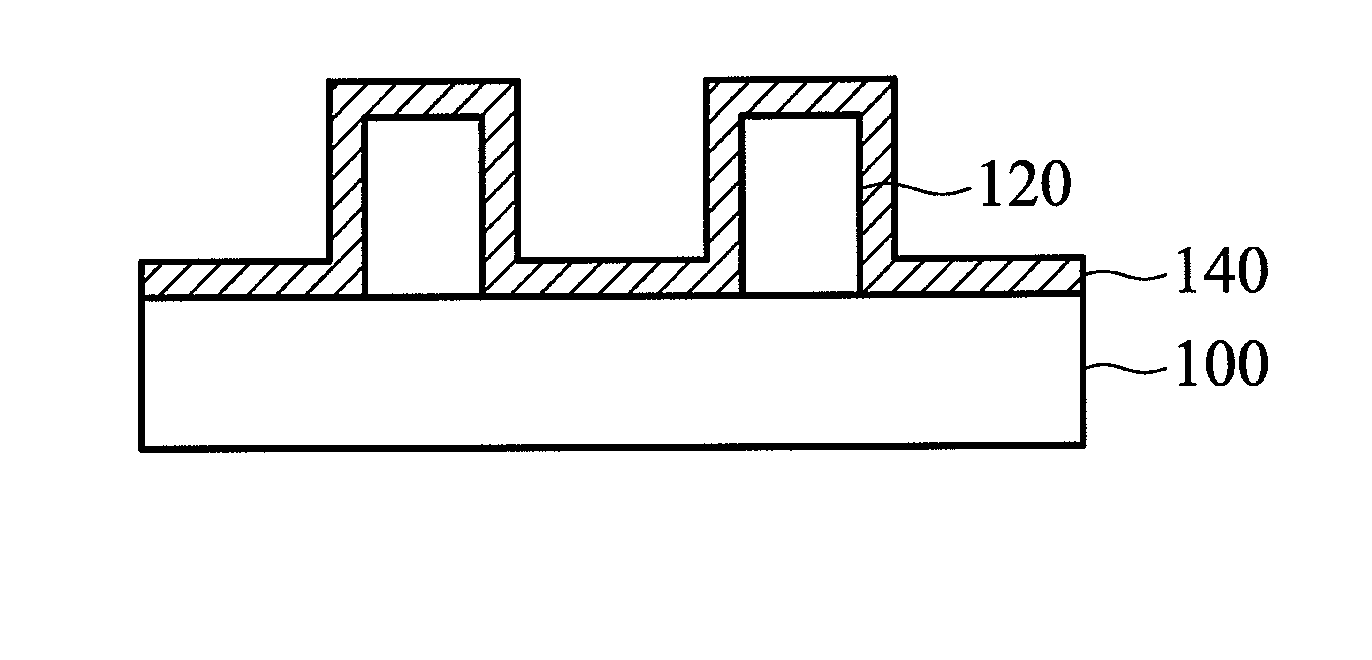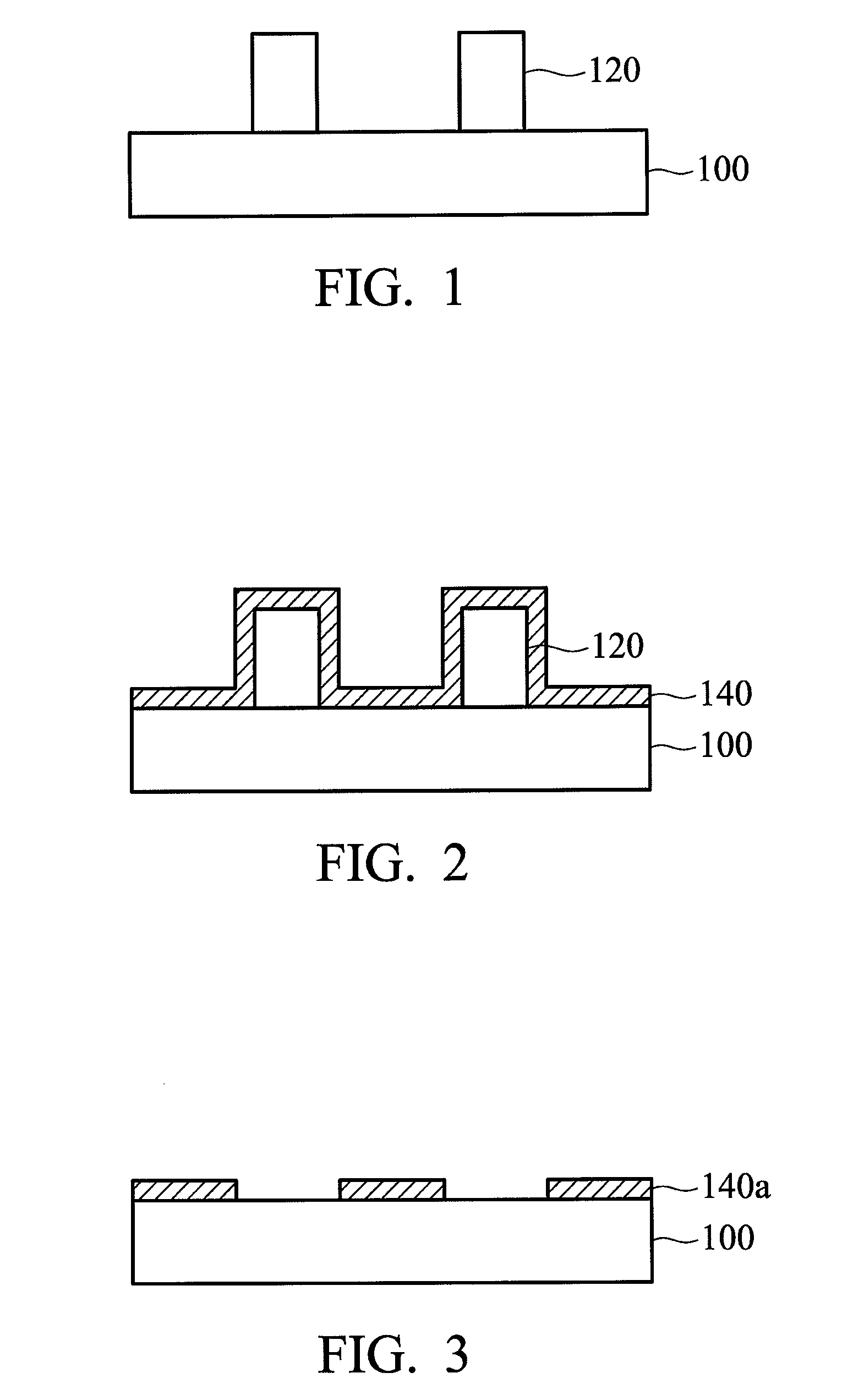Patterning process for oxide film
a technology of etching process and oxide film, which is applied in the direction of coating process, decorative arts, metallic material coating, etc., can solve the problems that tin oxide film cannot be patterned by an etching process in general, and the etching process is not easy to achiev
- Summary
- Abstract
- Description
- Claims
- Application Information
AI Technical Summary
Benefits of technology
Problems solved by technology
Method used
Image
Examples
examples 1-5
Barrier Layer Composition / Oxide Film: Ink / LFTO
[0017]The patterning process for oxide film of Examples 1-5 is described below. The process parameters of each example are shown in Table 1 with a pattern linewidth of 100 um.
[0018]Firstly, a ceramic substrate (an aluminum oxide plate of a thickness of 0.5 mm) was rinsed. Secondly, the ink was printed on the substrate through a screen printing process using a screen mesh to form a patterned barrier layer. The thickness of the patterned barrier layer is D1. Next, lithium-fluorine-doped tin oxide (LFTO) was deposited on the patterned barrier layer in the environment of 370° C. to form a coating. The thickness of the LFTO coating was D2. Finally, the ink material was removed by a lift-off solution to obtain the patterns of the LFTO coating.
[0019]The ink used in Examples 1-5 was a mixture of inorganic titanium oxide and silicon oxide. The ratio of each component of the ink was 70 wt % of titanium oxide, 25 wt % of silicon oxide, and 5 wt % o...
examples 6-10
Barrier Layer Composition / Oxide Film: Metal Slurry / LFTO
[0022]The patterning process for oxide film of Examples 6-10 is described below. The process parameters of each example are shown in Table 2 with a pattern linewidth of 100 um.
[0023]Firstly, a metal substrate (a galvanized steel plate of a thickness of 0.5 mm, manufactured by China Steel Corporation) was rinsed. Secondly, the metal slurry was printed on the substrate through a screen printing process using a screen mesh to form a patterned barrier layer. The thickness of the patterned barrier layer was D1. Next, lithium-fluorine-doped tin oxide (LFTO) was deposited on the patterned barrier layer in the environment of 390° C. to form a coating. The thickness of the LFTO coating was D2. Finally, the metal slurry was removed by a lift-off solution to obtain the patterns of the LFTO coating.
[0024]The metal slurry used in Examples 6-10 was a mixture of inorganic oxide and metal particles. The ratio of each component of the ink was 65...
examples 11-13
Barrier Layer Composition / Oxide Film: Ink / ITO
[0026]The patterning process for oxide film of Examples 11-13 is described below. The process parameters of each example are shown in Table 3 with a pattern linewidth of 100 um.
[0027]Firstly, a glass substrate was rinsed. Secondly, the ink was printed on the substrate through a screen printing process using a screen mesh to form a patterned barrier layer. The thickness of the patterned barrier layer was D1. Next, an indium tin oxide (ITO) was deposited on the patterned barrier layer in the environment of 220° C. to form a coating. The thickness of the ITO coating was D2. Finally, the ink material was removed by a lift-off solution to obtain the patterns of the ITO coating.
[0028]The ink used in Examples 11-13 was a mixture of inorganic tin oxide and silicon oxide. The ratio of each component of the ink was 70 wt % of tin oxide, 25 wt % of silicon oxide, and 5 wt % of organic binder (the organic binder was made by dissolving 10 g of ethyl c...
PUM
| Property | Measurement | Unit |
|---|---|---|
| temperature | aaaaa | aaaaa |
| thickness | aaaaa | aaaaa |
| thickness | aaaaa | aaaaa |
Abstract
Description
Claims
Application Information
 Login to View More
Login to View More - R&D
- Intellectual Property
- Life Sciences
- Materials
- Tech Scout
- Unparalleled Data Quality
- Higher Quality Content
- 60% Fewer Hallucinations
Browse by: Latest US Patents, China's latest patents, Technical Efficacy Thesaurus, Application Domain, Technology Topic, Popular Technical Reports.
© 2025 PatSnap. All rights reserved.Legal|Privacy policy|Modern Slavery Act Transparency Statement|Sitemap|About US| Contact US: help@patsnap.com


